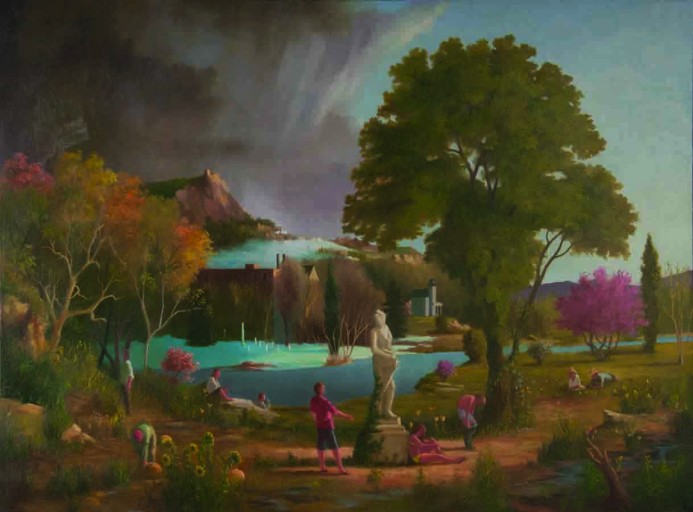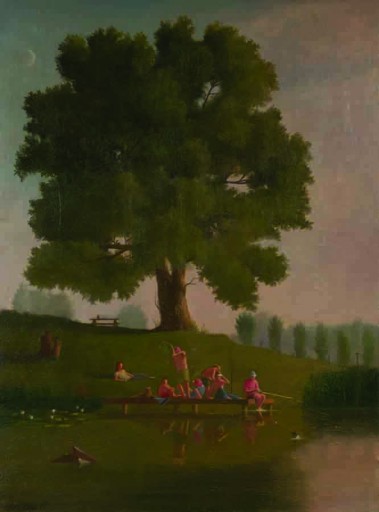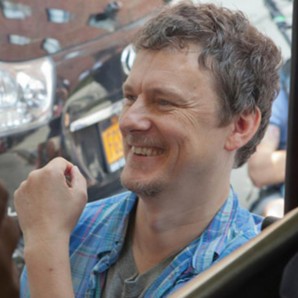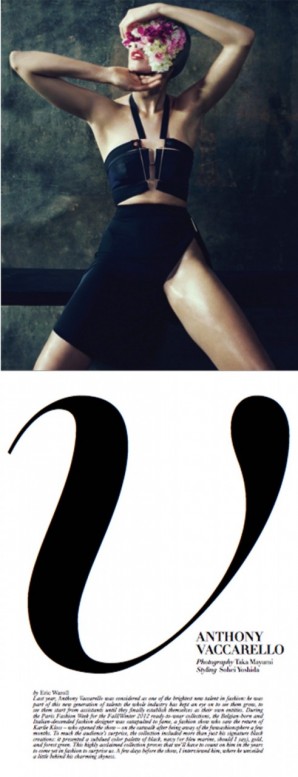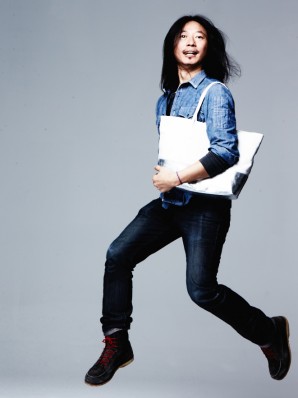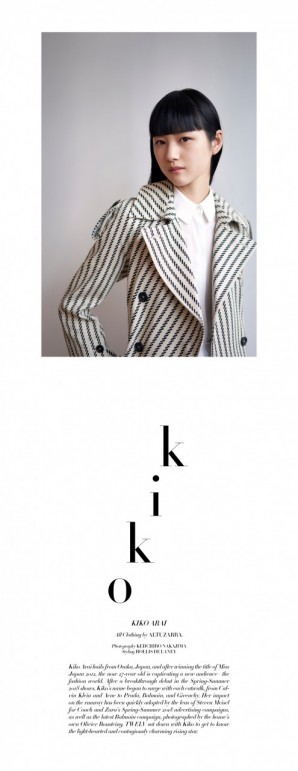TWELV sits down with founders of Parlor Social Club Jan Cieslikiewicz and Frederick Ghartey to give a glimpse into the story of co-founders living in New York City.
Interview: Neurosurgeon-turned-Artist Keith Kattner on the Surgery of Classical Painting
Dr. Keith Kattner does not have the typical background one would expect of a successful neurosurgeon. Though his medical career spans over two decades, his passion for painting has always been the base for his creativity, even within the world of medicine. "I’m an artist who just became a neurosurgeon, but the artist was still beneath it all," Kattner says. But perhaps the term 'Renaissance Man' would be a more apt descriptor, as his interests and accomplishments span an even more diverse range. A deep love of surfing, a fascination with American history, and a lifelong relationship with art– both as an artist and collector- have all been equally important factors in shaping his identity as a painter. In an exclusive TWELV interview, Dr. Kattner explains his transition from surgery to painting, and in the process, sheds some light on the profound commonalities of these seemingly opposing worlds.
Audrey from TWELV: How did your background and upbringing affect your interest in both art and medicine?
KK: When you look at an artist’s painting, a lot of their style comes from their individual story. My story started in Iowa living in farming communities. There wasn’t a lot of artistic culture there, but my mom was a cultured person and she began taking me to art lessons in Nebraska when I was about ten years old. But what I really enjoyed was after the lessons, walking around the museum waiting for my mom to pick me up. I became familiar with the Hudson River artists and their style of painting. I started painting on my own and continued through high school. When I went to undergrad, I had to decide to pursue a career in either biology, history, or art—all areas of passion for me. At the time, I got a job in a pathology laboratory and from there the pathologist mentored me into medicine. And I didn’t have much time to paint. So I ended up in the medical field and then went into neurosurgery.
A: You’ve had a long and successful career in neurosurgery. What moved you to pursue art full time?
KK: When I was a practicing neurosurgeon, I still loved art, but I just didn’t have the time to paint. So I started collecting American art. It began during my residency and then into my practicing years as a surgeon. I started with small Audubon prints from the 1840s and 50s before I started collecting larger original prints. From there, I started to collect all movements of American Art. I sort of supplemented what I really wanted to do by collecting. It’s not like one day I woke up and said “I’m gonna be an artist,” but the urge did start building in me during my years in neurosurgery and I felt like I applied art to neurosurgery.
A: How was the transition away from the world of medicine?
KK: The hardest thing I learned in art was procrastination. One day I just bought a canvas and picked up some paintbrushes, and it was off to the races from there. It reminded me of when I was a child. I couldn’t stop painting after that. So the first 3 or 4 years I knew I was going to paint and transition out of medicine into the art world, and it was just sort of a gradual transition.
A: So there was overlap between your time practicing medicine and painting?
KK: Yes. I used to work from 6AM until 10PM then I would paint for 3 hours after that. And I had to forgive myself for being bad at first. That’s one of the things medicine taught me. You’re not going to be the greatest surgeon in the world the first surgery you do, but you can do many, many surgeries and eventually you learn the technique. I figured if I painted really hard and gave myself a running start, when I left neurosurgery I’d have 4 years of painting under my belt.
A: You’ve painted over 600 paintings at this point. What keeps you engaged and motivated to paint at that level?
KK: Well, I used to give a lot of my paintings away. I gave many to patients, the hospital, and friends. It was all part of the process of learning how to paint. I had a patient who had brain cancer and her high school class was raising money for her. And they asked me if I would provide a painting for the auction, and I did. At the auction someone bought the painting anonymously and then gave it to her. So, that’s really the way I view art. Not as a market, but through experiences like that.
A: How would you compare the process of painting to surgery?
KK: There’s actually a great deal in common. The education of an artist is actually very similar to that in the medical field. In 17th century Dutch art, an artist would work under a master, a Dutch artist who was part of the guild. And the young artist would train under the master for many years. Then he would spend a year in Italy to train with other masters. So, in that way it’s like a fellowship or a residency. The young artist would have to be recommended by 2 other master artists to become part of the guild, and then he’d have to provide his masterpiece. That’s where the term ‘masterpiece’ comes from. As a surgeon resident or fellow, you’re really training your surgeons as a master would train his artistic pupil.
As far as the process of painting itself, I’m really focused in, as if during a surgery. When I’m in the operating room performing on a brain aneurysm, I’m not thinking about anything else outside of that microscope. Nothing matters until I’ve achieved what I need to. And I paint like that, too. I’m so focused on what I’m doing that I become somewhat oblivious to the world around me.
A: Mythical characters and celestial themes are featured in many of your paintings. What is the significance of this style?
KK: Painting is an internal exploration for me. Through my process of learning to paint, I had to think about what to paint. I had to identify the psychological process to paint with. I lived in Manhattan for 2 years just to go to the Metropolitan Museum of Art 3 times a week. And I went through everything. I painted photorealism, realism, portraits, landscapes, abstraction. I worked my way through it all. And then I started painting classical art and it really was a good fit for my personality.
I was trained under a Japanese surgeon, Takanori Fukushima, and I really think that ended up being reflected in my artwork as well. If you look at 19th century prints by the great Japanese printmakers, like Hiroshige, their printmaking was very similar to the classical approach of painting. I think that there’s this kind of clarity and sensitivity that rubbed off on me in my training as a neurosurgeon that is also present in my paintings.
A: Why was classical art the style that most resonated with you?
KK: A classical artist has a different mindset. If you’re a realist or naturalist, you paint the reality in front of you. When you’re a classical artist you have to reorganize those things in front of you in your mind. Through the creative process you start filling the void of the subject matter not being in front of you. It’s like a conversation with your painting.
A: Could you tell me about your upcoming exhibition in November?
KK: It’s going to show my transformation over a two year period. I have one painting called Persephone, and this work is about the four seasons but it’s also about the human life cycle. So I put all four seasons and the life cycle in that painting. For me, this painting brought me back to when I was an intern and I had just delivered a baby. I got a phone call at the same time that day informing me that my father had died. And it really stuck in my mind how the life cycle works. I retrospectively look at life like a memory, and I incorporate it into my art that way. In this work I have a classical composition of structure, and the figures you see are ones I’ve appropriated from various artists—with Persephone herself from iconic classical sculpture.
A: Do you think your style of painting will change in the future?
KK: As far as the direction I’m going at the moment, I’m currently studying the theory of visual signaling in my artwork. The signals that we see as a society that inform us of their meaning by learned experience. I thought, what if I took visual signaling and combined that with the theme of entropy– nature’s tendency to create randomness—and brought that into my paintings. So, as you move away from the chaotic focal point in the painting things get more organized. I’m still refining my process, but that’s the direction my artwork is headed now.
Kattner will be having a major exhibition in New York City opening on November 8th from 6PM - 9PM at the Salomon Arts Gallery, 83 Leonard Street, 4th Floor, and then by appointment until November 13th. Appointments can be made to edentpr@gmail.com or 917-622-8136.
WRITTEN BY AUDREY ROSE
EDITED BY HOLLIS DE LANEY
PHOTO CREDIT: KEITH KATTNER
related posts
Keiichiro Nakajima interview
Keiichiro Nakajima is a photographer and director based in Japan, represented by a management and production company called Signo, Inc, which is one of the largest and leading artist management...
SHIN FUJIYAMA Founder of Students Helping Honduras INTERVIEW
Japanese-American philanthropist Shin Fujiyama co-founded Students Helping Honduras with his sister Cosmo Fujiyama.
NEW TYPE #36: Mônot - ELI MIZRAHI INTERVIEW
Beginning with his childhood in Lebanon, Eli Mizrahi garnished inspiration from across the globe to debut his evening wear brand, Mônot, last fall.
RMK CREATIVE DIRECTOR: KAORI INTERVIEW
KAORI is a renowned make-up artist and the creative director of RMK beauty, a flourishing Japanese makeup and skincare brand that is now sold worldwide.
MICHEL GONDRY INTERVIEW
“MAYBE WE CAN BE IMMERSED IN MOVIES BECAUSE WE’RE USED TO DREAMING.”
JEAN PAUL GAULTIER EXCLUSIVE INTERVIEW
It has become almost useless and banal to introduce Jean-Paul Gaultier.The mere mention of his name alone elicits a constellation of images that have become part of our mind and imagination since...
NEW TYPE #35: DARA SENDERS INTERVIEW
Dara Senders, the designer behind the eponymously titled, all size inclusive brand that launched in 2018, has always been obsessed with fashion.
NEW TYPE #35: NTTE HATS
From a small city near Milan to Downtown New York, Paolo, Designer and creater of NTTE Hatsdiscovered his passion for hats and anything vintage at a young age.
NEW TYPE #34 : BEAU WATSON
1. As a new designer, how do you hope to distinguish yourself among other designers?
NIAN FISH INTERVIEW
Nian Fish, creative director of KCD, has been, for decades, a pivotal figure in the fashion world, assembling and producing fashion shows that have become cultural benchmarks unto themselves, such...
CESAR LOVE ALEXANDRE INTERVIEW
Cesar Love Alexadre is a duo of visual artists formed by Isabelle Chaput and Nelson Tiberghien.They met at the Gobelins school of Photography in Paris and now based in New York where they work on...
TOM PECHEUX INTERVIEW
TWELV got a special interview from Tom Pecheux. Read as we host interviews and explore the lives of artists who shape the final product - directors, fashion designers, stylists, ...
ANTHONY VACCARELLO INTERVIEW
Anthony Vaccarello was considered as one of the brightest new talent in fashion: he was part of this new generation of talents the whole industry has kept an eye on to see them grow, to see them...
Why is Everyone in Hollywood Buzzing About Actress Malgosia Garnys?
Have you ever felt like you were beautiful and powerful and the universe was conspiring in your best interest, and your opportunities were endless because you’ve lost people you loved...
INTERVIEW: Bigwig Broadway Producer, Jordan Roth and Acclaimed Choreographer, Michelle Dorrance
R.I.P Chek Wu
We at TWELV are deeply saddened to announce the passing of talented photographer, boundless free-spirit, and our friend, Chek Wu.
GatherNYC: Everything We Love About Church With No Weird Stuff
GatherNYC is Everything We Love About Sunday Service With None of the Weird Stuff
NEW TYPE #33: Catherine Casias Inteview
If fashion is an expression of experiences, Catherine Casias has a lot of area to cover. She has excelled as an Olympic volleyball player, a philosophy major, and a fine artist....
Party Czar Carmen D’Alessio, Empress of the Sun and the Queen of the Night
You may not know Carmen D’Alessio by name.
IKEMEN #39: JORDAN HENRIQUEZ
IKEMEN (ē´k´mɛn): Japanese Slang
"REALLY, REALLY, RIDICULOUSLY GOOD LOOKING PEOPLE"
IKEMEN #38: WARREN KAY
IKEMEN (ē´k´mɛn): Japanese Slang
"REALLY, REALLY, RIDICULOUSLY GOOD LOOKING PEOPLE"
NEW TYPE #32: ALEXANDER ROYS INTERVIEW
"Introducing an innovative Men’s designer to inspire you with the visions of future and the rise of technology."
Branding in the Worlds of Art and Commerce According to Silvia Mella
Branding is everything. For an entrepreneur, it is the difference between viability and bankruptcy. On social media, we are all our own brands.
Interview: Jackie Yang, Creative Director of Chelsea and Walker
TWELV sat down with Jackie Yang, Creative Director of Chelsea and Walker, in the brand’s New York City...
New Type #31: Angela Mitchell – Krystal and Marilyn Lavoie Interview
We are living in the age of fast fashion, and even Europe’s most storied luxury brands have been moving their factories to Asia to reduce costs.
Ikemen #37: Dominik Halas
IKEMEN (ē´k´mɛn): Japanese Slang
"REALLY, REALLY, RIDICULOUSLY GOOD LOOKING PEOPLE"
New Type #30: Carolina Sarria & Bianca Allen Interview
Both Carolina Sarria and Bianca Allen knew they wanted to become fashion designers from a young age.
Interview & Backstage: Christian Siriano Celebrates 10 Years in Fashion
After the successful launch of his book Dresses to Dream About, a decade-anniversary celebration on the runway, and a whirlwind of striking celebrity looks on the red carpet of...
New Type #29: Jackie Astier Interview
Astier places its identity within the advanced adaptation skills of the modern New York woman.
INTERVIEW: Meet Kiko Arai, Miss Japan-turned Face of Balmain and Zara
Kiko Arai hails from Osaka, Japan, and after winning the title of Miss Japan 2012, the now 27-year old is captivating a new audience– the fashion world.
Interview: Parisian Designer Frédéric Robert's Debut Shoe Collection "ME.LAND"
A vibrant brand of Italian-made shoes for men is emerging this year as one-to-watch.
New Type #28: the Design Duo Behind Maxime Hernandez Interview
The streetwear phenomenon in the fashion establishment is not slowing down anytime soon.
MICHEL NAFZIGER INTERVIEW
With a wealth of experience shooting some for some of fashion's most renowned clients (Yves Saint Laurent, Guy Laroche), ...
IKEMEN #36: Jérôme LaMaar
IKEMEN (ē´k´mɛn): Japanese Slang
"REALLY, REALLY, RIDICULOUSLY GOOD LOOKING PEOPLE"


